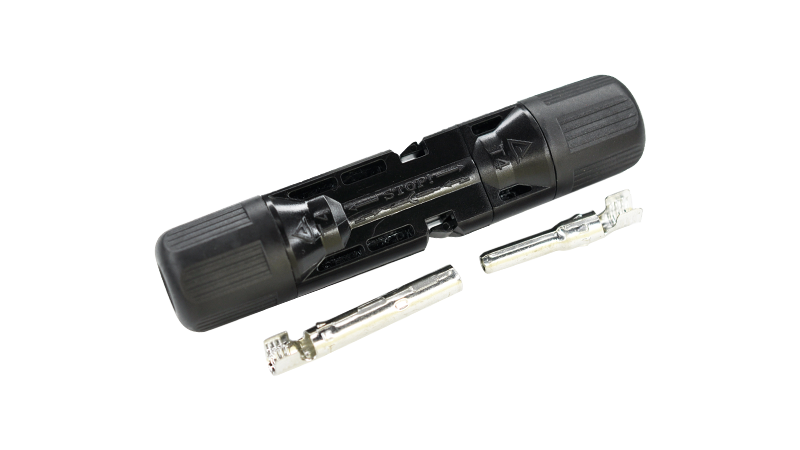High rated voltage and current: The connector supports voltages up to 1000V and currents up to 30A, which is suitable for high power solar systems and can handle large currents and voltages to meet the needs of high power solar systems.
Low contact resistance: the contact resistance is less than 0.35mΩ, which ensures the efficiency and stability of the connection, reduces the energy loss, and improves the system efficiency.
IP67 Protection class: Fully waterproof and dust-proof, able to maintain stable and reliable performance in harsh outdoor environments, extending service life.
Durability and chemical resistance: PC material has good chemical resistance and weather resistance, and can resist the influence of ultraviolet light and other environmental factors, thereby improving the service life and reliability of the connector.
Flame retardant performance: Through the UL94-V0 flame retardant grade certification, increase the safety of the system.
Material characteristics: PPO material has good weather resistance, tinned copper conductor provides good electrical conductivity to ensure the effective transmission of current.
Temperature adaptability: Suitable for a wide temperature range, -40℃ to +90℃ ambient temperature, the connector itself can work normally in the range of -40℃ to +135℃.
Safety level: Meet the requirements of DCII safety level to ensure the safety and reliability of the system.
Self-locking system: embedded self-locking system, stable and reliable connection, not easy to loose.
Connection system: Multi-point connection design, suitable for multi-component connection requirements, providing stable reliability.
Connection mode: crimping connection, easy to install.
These advantages make 1000V 30A IP67 solar photovoltaic connectors play a very important role in solar energy systems, providing high efficiency, high safety and high reliability connection solutions.

Preparation: Ensure a safe working environment and wear appropriate personal protective equipment, such as gloves and goggles, to prevent electric shock and avoid direct contact with live parts.
Select the right connector: According to the voltage and current requirements of the solar system, select the right solar connector. Ensure that the rated voltage and current of the connector are higher than the actual operating voltage and current of the system.
Connect the cable: Strip the insulation of the cable to expose the conductor, then insert the conductor into the wire end of the connector. Ensure that the conductor is in close contact with the wire end to reduce contact resistance.
Crimp connection: Use the appropriate tool (such as crimp pliers) to secure the conductor to the connector wire end. Ensure that the crimp is firm to prevent the conductor from loosening during use.
Connector docking: Butt the plug parts of the two connectors to make sure they are tightly connected. Some connectors are designed with self-locking mechanisms that need to be rotated or pushed in a specific way to lock the connection.
Check the connection: After completing the connection, check whether the connector is firmly connected to ensure that there is no loosening or damage.
Installation completed: After the connection is complete, the system can be powered on to ensure that the connector is working properly.
When using solar connectors, attention should be paid to the safety and accuracy of the operation to ensure the correct installation of the connectors and the stable operation of the system.
You can also contact us directly in the following ways: visit, telephone, email